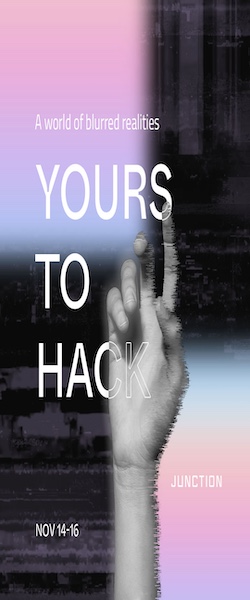With summer winding down and Junction 2025 on the horizon, it’s time to trade beachwear for laptops, headsets – and caffeine. Why? Because this year, we're diving headfirst into something deeper than just code: the theme for Junction 2025 is Utopia & Dystopia!
What’s the difference between utopia and dystopia?
In simple form, utopia describes something idealized, harmonious, and “perfect” whereas dystopia imagines something deeply flawed, unjust, and undesirable. A popular culture example of a utopian society is the United Federation of Planets from Star Trek – a technologically advanced society built on peace, cooperation, and respect for diversity. It offers a vision of unity across planets and cultures. A contrasting example of a kind of unjust dystopia in popular culture is the society in The Hunger Games series where oppression, inequality, and loss of freedom define daily life.
Why do we need both?
While utopia and dystopia are clear opposites, they possess one combining characteristic: both enable us to blur the lines of reality. In fact, they quite literally help us think “outside the box” to solve even the most complex problems.
Utopian thinking in Junction 2025 can mean imagining the best possible outcomes with technology, which helps us set long-term goals aiming to benefit multiple communities and inspire innovation in building a fair and equitable digital future. This is not to be ridiculed as “daydreaming of the perfect world” but rather seen as a method for imagining a solution that can help multiple groups in society function better together than they would have expected.
Dystopian thinking on the other hand, warns us of the worst-case scenarios to keep us accountable and alert to the risks we might otherwise overlook. Even popular culture examples, such as the apocalyptic worlds portrayed in The Hunger Games or Black Mirror, can be used as starting points for finding new perspectives for solving problems. Especially in the fast-changing world of technology and AI, it is important to understand the possible social harms these tools may cause, such as issues with data privacy and security. At a hackathon like Junction, thinking in extremes – utopia or dystopia – can stretch your creativity, challenge assumptions, and lead to real-world innovation.
What kind of utopian or dystopian futures can we achieve with AI?
Junction Team Member: “I feel like the common dystopia associated with the increased use of AI is that we see AI taking our personal data, our jobs, our intellectual property, etc. Basically, we fear that AI might develop into something so smart that it replaces humans and only amplifies discrimination in society, especially if trained on biased data. Additionally, AI’s machine learning algorithms have enabled it to process massive amounts of data on people, which can lead to a dystopian future of mass surveillance and increasing the spreading of harmful misinformation. These are the challenges that are ours to hack.”
Junction Team Member: “In a utopian future, AI would be trained on inclusive data and safeguarded against bias, becoming a tool that frees people from tedious work, fuels creativity, and drives discovery while also making access to knowledge, tools, and services more equitable worldwide. With its processing power and ability to construct accurate predictive analysis, we can create smarter and more efficient systems everywhere, from education to energy and from healthcare to global logistics.”
With these in mind, we can see that it’s important to attempt to harness AI’s full potential while actively managing the associated risks. We need to be critical when we are optimistic, and curious but cautious when we think negatively. These are the two sides, but it’s up to us which future we build.
Applications are now open for Junction 2025 on November 14th-16th at Hybridiarena Hype (Espoo). Let’s fill the weekend with code, creativity and visions of the future we want to build.











